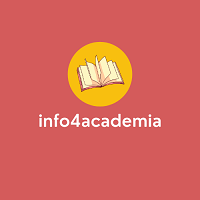Advertising Strategies of Hyundai Motors In Indian Market
Abstract
Full Text:
PDFReferences
Burgess, R., & Stern, N. (1993). Taxation and development. Journal of Economic Literature, 31(2), 762-830.
Cohen, B. (2006). Urbanization in developing countries: Current trends, future projections, and key challenges for sustainability. Technology in society, 28(1-2), 63-80. doi: 10.1016/j.techsoc.2005.10.005.
Cragg, J., & Uhler, R. (1970). The demand for automobiles. The Canadian Journal of Economics / Revue Canadienne D'Economique, 3(3), 386-406. doi: 10.2307/133656.
Fossen, B. L., & Schweidel, D. A. (2017). Social TV: How social media activity interacts with TV advertising. GFK Marketing Intelligence Review, 9(2), 31-35.
Glass, G. V. (1976). Primary, secondary, and meta-analysis of research. Educational researcher, 5(10), 3-8. Doi:10.2307/1174772.
Gopinath, S., Thomas, J., & Krishnamurthi, L. (2014). Investigating the relationship between the content of online word of mouth, advertising, and brand performance. Marketing Science, 33(2), 241-258.
Horvath, A. O. (2001). The alliance. Psychotherapy: Theory, Research, Practice, Training, 38(4), 365–372. Doi: 10.1037/0033-3204.38.4.365.
Huang, Y. K. (2012). Marketing budget allocation and marketing benefits of traditional media, online advertising, and electronic word-of-mouth. African journal of business management, 6(33), 9524-9532. doi: 10.5897/AJBM11.1336.
Khan, M. S., & Mahapatra, S. S. (2009). Service quality evaluation in internet banking. An empirical study in India. International Journal of Indian Culture and Business Management, 2(1), 30-46.
Okazaki, S., Zou, S., & Taylor, C. S. (2006). Advertising standardization’s positive impact on the bottom line. A model of when and how standardization improves financial and strategic performance. Journal of Advertising, 35(3), 17-33. Doi: 10.2753/JOA0091-3367350302.
Onda, K., Sinha, P., Gaughan, A. E., Stevens, F. R., & Kaza, N. (2019). Missing millions: Undercounting urbanization in India. Population and Environment, 41(2), 126-150. Doi: 10.1007/s11111-019-00329-2.
Shapiro, C., & Varian, H. R. (1999). Information rules: A strategic guide to the network economy. The Journal of Economic Education, 30(2), 189-190.
Speak, A., Escobedo, F. J., Russo, A., & Zerbe, S. (2018). Comparing convenience and probability sampling for urban ecology applications. Journal of Applied Ecology, 55(5), 2332-2342. doi: 10.1111/1365-2664.13167.
Sutton, J. (1999). Sunk costs and market structure. Cambridge: The MIT Press.
Weible, R. (2009). Are universities reaping the available benefits internship programs offer? Journal of Education for Business, 85(2), 59-63. doi: 10.1080/08832320903252397.
Yasmin, A., Tasneem, S., & Fatema, K. (2015). Effectiveness of digital marketing in the challenging age: An empirical study. International Journal of Management Science and Business Administration, 1(5), 69-80. doi: 10.18775/ijmsba.1849-5664-5419.2014.15.1006.
Yiannaka, A., Giannakas, K., & Tran, K. C. (2002). Medium, message, and advertising effectiveness in the Greek processed meats industry. Applied Economics, 34(14), 1757-1763.
DOI: https://doi.org/10.32535/ijafap.v4i1.1037
Refbacks
- There are currently no refbacks.
Copyright (c) 2021 L. Sudershan Reddy, Ranjith P V, Saili Sabnis, Varsha Ganatra, Kailash Shastry, Anastasya Elviona, Liem Gai Sin, Yaw Nee Chee, Daisy Mui Hung Kee, Chareeya A/P Perak Kerof, Wang Qianya, Wei Jiaze

This work is licensed under a Creative Commons Attribution 4.0 International License.
International Journal of Accounting and Finance in Asia Pacific (IJAFAP)
ISSN 2684-9763 (Print) | ISSN 2655-6502 (Online)
DOI Prefix: 10.32535 by CrossRef
Published by AIBPM Publisher
JL. Kahuripan No. 9, Hotel Sahid Montana, Malang, Indonesia
Email: adm.ijafap@gmail.com
Phone: +62 341 366222
Website: https://ejournal.aibpmjournals.com/index.php/IJAFAP
Governed by
Association of International Business and Professional Management
Email: admin@aibpm.org
Website: https://www.aibpm.org/
Licensing Information

International Journal of Accounting and Finance in Asia Pacific (IJAFAP) is licensed under a Creative Commons Attribution-NonCommercial-ShareAlike 4.0 International License.
















